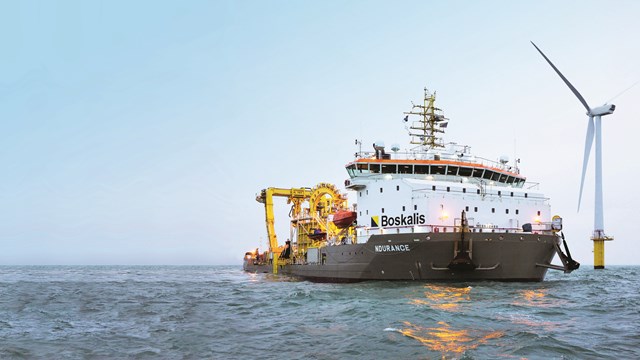Royal Boskalis Westminster is a leading global marine contractor and services provider. With safety as our core value, we offer a wide variety of specialist activities to the oil & gas and renewa-bles sectors. These activities include marine instal-lation and decommissioning, seabed intervention, marine transport and services, subsea services and marine survey. In addition, Boskalis is a global dredging contractor, provides towage and terminal services across the globe and delivers marine salvage solutions. By understanding what drives our clients we are able to provide the solutions that enable them to meet their specific business goals. For this reason we are constantly looking for new ways to broaden and optimize our offering and are committed to expanding our proposition, supported by our financial strength. With our committed professionals in engineering, project management and operations, 800 special-ized vessels and an unprecedented breadth of activities in 90 countries across six continents we help our clients in the offshore industry push boundaries and create new horizons.
LONG-TERM DRIVERS APPLICABLE TO THE PROJECT
Generating renewable energy. Increasing energy consumption.
PROJECT CONTEXT
In the Agreement for Sustainable Growth from the Dutch government, it has been agreed that in 2023, 16 percent of the Dutch energy-supply needs to come from sustainable sources. To achieve this goal, the Netherlands need to generate more wind-energy, both on land and sea.
INTRODUCTION
The grid connection of the Borssele offshore wind area in the North Sea consists of two 700 MW connections, called Alpha (for Borssele I and II) and Beta (for Borssele III and IV). Boskalis Subsea Cables, in consortium with NKT, was awarded the contract for the supply and installation of 4 export cables and 1 intercon-nector cable. In order to execute the project in a safe and efficient manner, Boskalis has taken full advantage of the expertise and capabilities within the group. To allow the cables to be installed, shallow parts of the route are dredged and sand-waves are pre-sweeped.
BSS-III
For the project, cable burial up to 10 meters depth was required. To achieve this, a trench of 2 meters was dredged. Then the Boskalis inhouse designed burial sledge BSS-3 lowered the cable another 8.5 meter. The BSS-III is capable to bury the cables up to 8.5 m in sand and 6.5 m in hard clay. A world record for cable burial. Using the tool, Boskalis managed to limit the amount of dredging in the NATURA2000 area Westerschelde and therefore minimizing the impact on the unique environment of this nature protection area.



